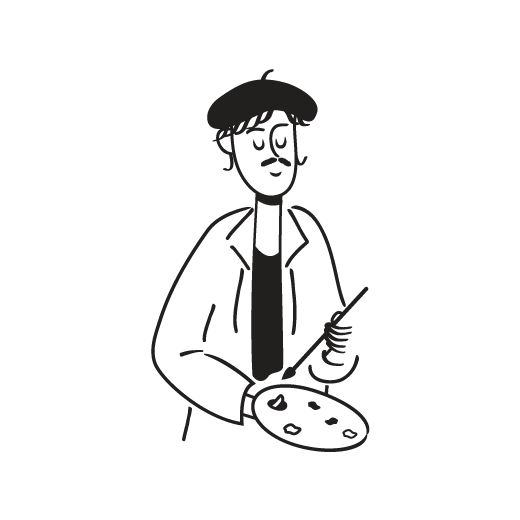
Basic knowledge: Art
Objective:
Learners acquire basic knowledge of a selected basic topic in the subject of art. They become familiar with characteristic features, techniques and historical contexts and develop an understanding of the significance of the subject in art history.
Contents and methods:
The worksheet provides an introduction to a basic topic in art (e.g. an epoch, a technique or an art historical concept). Learners read an informative text, answer questions and note down their own questions and comments. The sheet can be used universally and can be adapted for any basic topic.
Skills:
- Basic knowledge of art history topics
- Ability to analyze stylistic features and techniques
- Critical reflection and independent questioning
Target group and level:
From grade 7 onwards
88 other teachers use this template
Target group and level
From grade 7 onwards
Subjects
Basic knowledge: Art

Introduction
This worksheet provides fundamental information about the Baroque period in art history.
Baroque
The term "Baroque" refers to an artistic style and period that dominated Europe from the early 17th century to the mid-18th century. Originating in Rome, the Baroque style quickly spread across Italy and into France, Spain, Portugal, Austria, and other parts of Europe. It succeeded the Renaissance and Mannerism periods and preceded the Rococo and Neoclassical styles. The term "Baroque" comes from the Portuguese word "barroco," meaning an irregularly shaped pearl, initially used pejoratively to describe the style's ornate and complex qualities.
Baroque art is characterized by its exuberance, grandeur, and dramatic intensity. It employs contrast, movement, deep color, and intricate detail to create a sense of awe and emotional engagement. The Catholic Church, particularly during the Counter-Reformation, promoted the Baroque style to convey religious themes with direct and emotional involvement, countering the simplicity of Protestant art.
In architecture, Baroque buildings often feature large central spaces, domes, and lavish decorations. Notable examples include St. Peter's Basilica in Rome and the Palace of Versailles in France. These structures were designed to impress and overwhelm the viewer with their grandeur and intricate details. The use of light and shadow, as well as the incorporation of dramatic elements like twisted columns and cartouches, are hallmarks of Baroque architecture.
Baroque painting is known for its use of intense colors, strong contrasts of light and dark (chiaroscuro), and dynamic compositions. Artists like Caravaggio, Peter Paul Rubens, and Rembrandt were central figures in Baroque painting. Their works often depict dramatic moments and emotional intensity, aiming to captivate the viewer. Caravaggio's realistic human figures and dramatic lighting, Rubens' energetic and movement-filled compositions, and Rembrandt's masterful use of light in portraiture exemplify Baroque painting.
In music, the Baroque period saw the development of new forms such as the concerto, sonata, and opera. Composers like Johann Sebastian Bach, George Frideric Handel, and Antonio Vivaldi were influential in shaping Baroque music. Baroque compositions are known for their complexity, ornamentation, and use of contrasts in volume and tempo.
Key terms associated with the Baroque period include:
- Chiaroscuro: A technique in painting that uses strong contrasts between light and dark to create a sense of volume and depth.
- Ornamentation: Decorative elements that are abundant in Baroque art and architecture, adding to the overall complexity and grandeur.
- Counter-Reformation: The period of Catholic revival that influenced the promotion and development of Baroque art to convey religious themes effectively.
The Baroque period was a time of innovation and emotional expression in the arts. Its legacy continues to influence various artistic disciplines, and its masterpieces remain celebrated for their ability to evoke powerful emotional responses. The Baroque style's emphasis on grandeur, drama, and intricate detail makes it a significant and enduring period in the history of art.